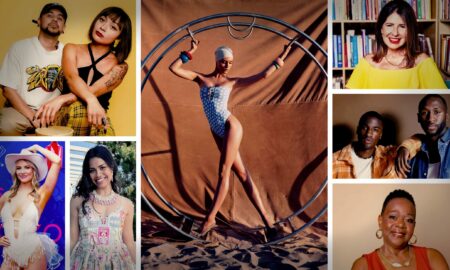

Today we’d like to introduce you to Dr. Bonnie J Dunbar.
Hi Dr. Dunbar, thanks for sharing your story with us. To start, maybe you can tell our readers some of your backstory.
Much of my story is already on the internet, from being raised on a farm/ranch in Outlook, WA to proceeding from there to attending the University of Washington in Seattle to study engineering, to working on the Space Shuttle in Downey, CA and Palmdale, CA to becoming a NASA Astronaut and now a Professor of Aerospace Engineering at Texas A&M University. I flew five times on the Space Shuttle, twice on Columbia, which I helped to build. You may reference: https://www.historylink.org/File/9865. There are photos in the article which are in the public domain.
I currently have a NASA grant to work on the next generation of spacesuits – to fit anyone of any shape and gender — in a vision evoked by Science Fiction – enter a full body scanner and shortly thereafter have your spacesuit with all of its life support systems and completely mobile. Picture the spacesuits in “The Martian”. My grant was featured by NASA and the NASA Advanced Innovation Concepts (NIAC). https://www.nasa.gov/directorates/spacetech/niac/2022/Spacesuit_Digital_Thread/.
In our next steps, we are involving the consulting expertise of Bruce and Connie Huffa of FabDesigns in Agoura Hills, California. https://fabdesigns.com/. We are evaluating the potential of using 3D knitting in the development of next-generation spacesuits.
I currently have 9 graduate students and laboratories at TAMU involved in human spaceflight exploration technologies and engineering research. The work includes advanced spacesuits as well as how fluids behave in the reduced gravity of the Moon and Mars. (not how you expect!!). We are also building a low g centrifuge to better understand how reduced gravity affects human systems such as the cardiovascular system. All in preparation for our return to the Moon (the Artemis missions) in 2025 and on to Mars in about 2039.
We all face challenges, but looking back would you describe it as a relatively smooth road?
All roads have speed bumps. That his a life given. But I have been blessed for 73 years and am thankful every day. The important questions are how do we all manage the speed bumps and what is our attitude? My first-speed bump was not having funds to attend college since we were a family farm and my income came from working in the fields. Only by studying hard (e.g. getting good grades) to acquire scholarships and financial aid was I able to achieve that part of my dream. And then I had outstanding support from many people in my life, starting with my mother and father, my physics teacher, and my University Department Chair. Despite perceptions to the contrary, most of my support in the late 1970s came from men since there were few women engineers at that time and no female astronauts. But I worked hard, created positive partnerships, and they supported me.
Not only as mentors but as lifelong friends. When I joined Rockwell International in 1976 (Downey), I had the opportunity to work on the Columbia Space Shuttle and was supported by a great group of engineers. I learned much from them and took that knowledge to NASA when I joined the Mission Control Center as a Flight Controller in 1978. I was fortunate to be selected to the Astronaut Corps in 1980. NASA had a great poster on the wall: “your altitude is determined by your attitude”. That is still true today – a message I give to my students. Don’t bemoan what you don’t have now- work hard to achieve your dreams and be positive with those around you every step of the way.
Can you tell our readers more about what you do and what you think sets you apart from others?
I have had several careers: Engineer, Mission Controller, Astronaut, NASA Executive, President and CEO of the Museum of Flight in Seattle, and University Professor. My specialties are human spaceflight technologies and solving complex engineering questions, related to spacesuits, life support systems, Bioastronautics, fluid physics in reduced gravity, and design of vehicle thermal protection systems.
I am not sure what sets me apart if anything does. I consider myself pretty normal. But I have worked hard, taken nothing for granted, and, when I needed to, drawn upon the inner strength I learned from my family.
I wake every day hoping to learn something I didn’t know before, and can’t wait to see what new discovery is shared from space exploration. Exploration and discovery have always been part of the human DNA. What we learn provides us with knowledge that gives us food, energy, medical support, transportation, communication, and so many things that make our lives move “livable” each day. But I believe that what feeds the human soul is the excitement of discovery and creativity, and the quest to understand where we fit in this 13.7 Billion year old universe. It is said that science is about discovering how the world works and engineering is about creating the world that is not yet there. I find that engineering is not only problem-solving to make our lives better, it is also about creating the world of our dreams. I hope to contribute to those dreams throughout my life.
Are there any important lessons you’ve learned that you can share with us?
The journey is never done, and every day is a new day.
Contact Info:
- Website: https://ahsl.engr.tamu.edu/ https://engineering.tamu.edu/aerospace https://www.nasa.gov/
- Twitter: @BonnieJDunbar








Image Credits
Credit to NASA for flight photos. For personal child photo, and Digital Thread Image credit to me and please do not reproduce beyond this article. For Rockwell International News Article, the company is now owned by Boeing, but article dates to about 1977 when I was selected as a finalist for the 1978 astronaut selection. I was not selected at that time, but was later selected in 1980.














